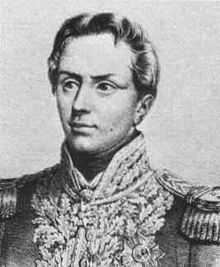Alexandre-Antoine Hureau de Sénarmont

Alexandre-Antoine Hureau de Sénarmont (21 April 1769 – 26 October 1810) was a French artillery general.
He was born at Strasbourg, and educated at the Metz school for engineer and artillery cadets. In 1785 he was commissioned in the artillery, in which he served as a regimental officer for fifteen years. In 1800 he won great credit both by his exertions in bringing the artillery of the Army of Reserve over the Alps and by his handling of guns in the battle of Marengo. In 1806, as a general of brigade, and commander of the artillery of an army corps, he took part in the Jena and Eylau campaigns.
But he is remembered chiefly in connection with the case shot attack which was the central feature of Napoleon's matured tactical system, and which Sénarmont put into execution for the first time at the battle of Friedland. For this feat he was made a baron, and in 1808 he was promoted general of division by Napoleon on the field of battle in front of Madrid. He was killed at the siege of Cadiz in October 1810.
In 1811 an urn with his heart was interred in the Panthéon, Paris.
| Wikimedia Commons has media related to Alexandre-Antoine Hureau de Sénarmont. |
External links
![]() This article incorporates text from a publication now in the public domain: Chisholm, Hugh, ed. (1911). Encyclopædia Britannica (11th ed.). Cambridge University Press.
This article incorporates text from a publication now in the public domain: Chisholm, Hugh, ed. (1911). Encyclopædia Britannica (11th ed.). Cambridge University Press.